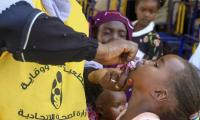Celebrating the 134th birth anniversary of Jamshed Nusserwanjee (1886-1952), a philanthropist and the first elected mayor of Karachi, speakers at a gathering on Sunday stressed the dire need to understand and acknowledge the contributions of various non-Muslim communities, especially Parsis.
The Karachi Theosophical Society, a forum founded in 1896, organised the gathering at the auditorium of the Jamshed Memorial Hall to pay tributes to Nusserwanjee and discuss his work as the city’s first elected mayor, a philanthropist and an architect whose developmental contributions earned him the title of ‘Maker of Modern Karachi’.
In addition to students of schools run by the Theosophical Society and civil society activists, a large number of members of the Parsi community — who are not often seen at public events — also attended the gathering to pay homage to Nusserwanjee.
During Nusserwanjee’s tenure as the president of the Parsi community in the Karachi municipality and then the first elected mayor, Karachi turned into a well-planned and developed city, said the speakers.
Hamid Mayet, the Theosophical Society’s honorary general secretary, said that during his tenure, Karachi was known as the cleanest city, with the streets being washed twice a day. “The new generation should know about the founders of the modern city and their contributions.”
Architect and heritage consultant Marvi Mazhar said she felt an immense pride to work on the historic building of the Jamshed Memorial Hall, which played an important part in creating Karachi’s history.
“As a heritage consultant and activist, I have been rethinking the idea of preserving and curating culturally significant spaces; a centre like the Theosophical Society which is frozen in past with its in-house artefacts, furniture pieces and archives — this building may play an important role for a small-scale museum — which defines its own history and timeline.”
She also said: “We in South Asia need to layout our own history timeline on site-specific projects and develop our own small-scale museums detached from nationalistic narrative, which serve the community on relatable scale.”
Researcher and academic Akhtar Balouch said that in the inauguration ceremonies of important government buildings of the Karachi Municipal Corporation and Karachi Local Board in the 1930s, texts from the Quran, the Bible, the Gita and the Avesta were read out, showing religious harmony in the pre-Partition era.
Unfortunately, however, after Partition, most of the roads and landmarks named after the people who contributed to the city’s development but belonged to various non-Muslim faiths have been renamed, he added.
Prof Dr Riaz Ahmed Shaikh, dean of the Faculty of Social Sciences & Education Department at the Shaheed Zulfikar Ali Bhutto Institute of Science & Technology, said Nusserwanjee played a major role in developmental and political movements not only in Karachi but also in rural Sindh.
“Nusserwanjee’s role in organising the peasant movement that later transformed into the Sindh Hari Committee was remarkable. Also, his role in the building of the Sukkur Barrage was a significant contribution to rural Sindh.”
There could not have been a better time than now for celebrating Nusserwanjee’s contributions to the city because today the sprawling metropolis has been facing the issue of ownership, he added. He also stressed that there should be a campaign to revive the pluralistic and secular colour of Karachi.
Shahid Abdulla, one of the founders of the Indus Valley School of Art & Architecture, discussed the relocation of the 100-year-old Nusserwanjee building from Kharadar to its Clifton campus in 1991, a unique move in the architectural history of the Subcontinent. “Only 50 stones were broken or damaged out of the 26,000 that were retrieved.”
Pakistan Institute of International Affairs chairperson Dr Masuma Hasan said that after retiring from politics in 1940, he devoted his remaining life to social work, and the extent of his involvement could be judged from the fact that he was active in around 77 institutions, mostly welfare-oriented.
Sindh Police personnel can be seen passing on a police vehicle in Karachi. — AFP/FileStreet crime in Karachi’s...
DG Sindh Food Authority, Agha Fakhr Hussain inspects the tea shop during the operation on February 17, 2024. —...
Jamaat-e-Islami Emir Hafiz Naeem ur Rehman addresses students who appeared in an aptitude test for the JI’s Bano...
A man holds a gun in this image. — Reuters/FileA 30-year-old man was shot and killed near Jamali Flyover on the...
Man puts his thumb impression on ballot book prior to issuance of a ballot paper to cast vote at a polling station in...
A representational image of double cabin vehicles. — ReutersThe Sindh High Court on Friday dismissed a petition...







